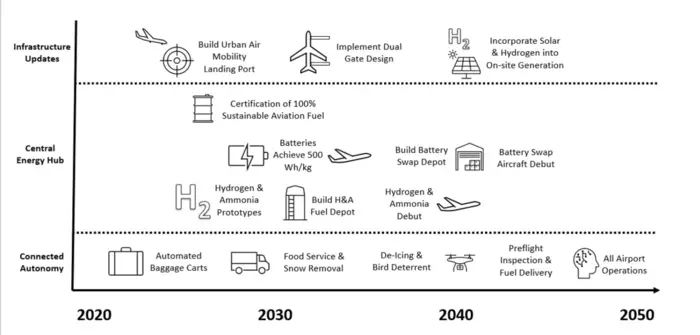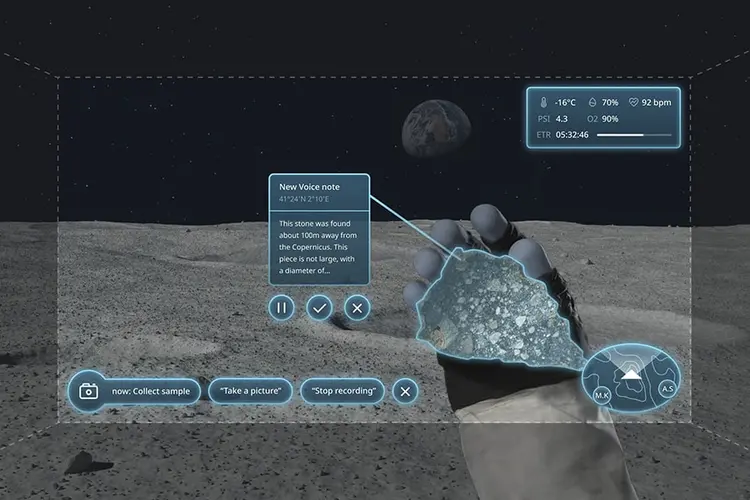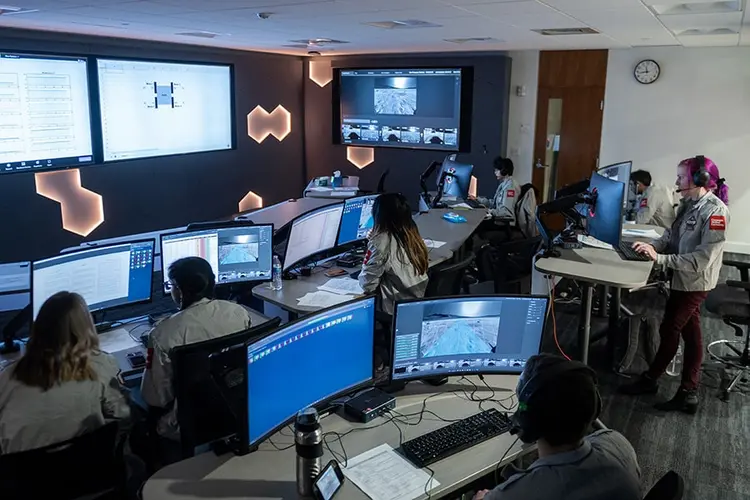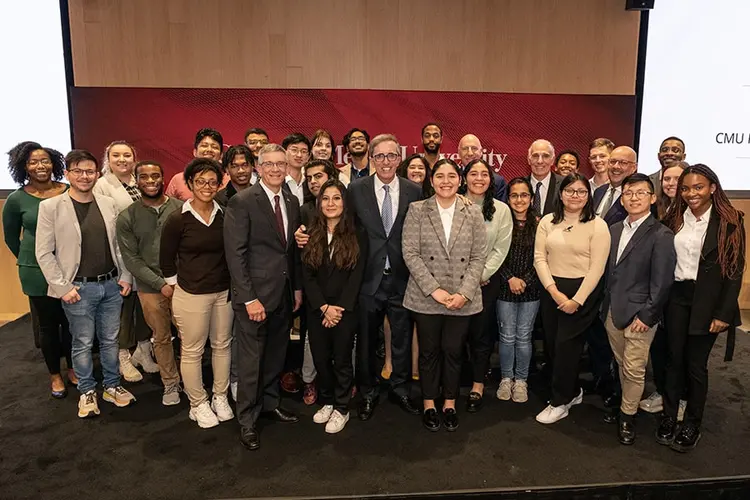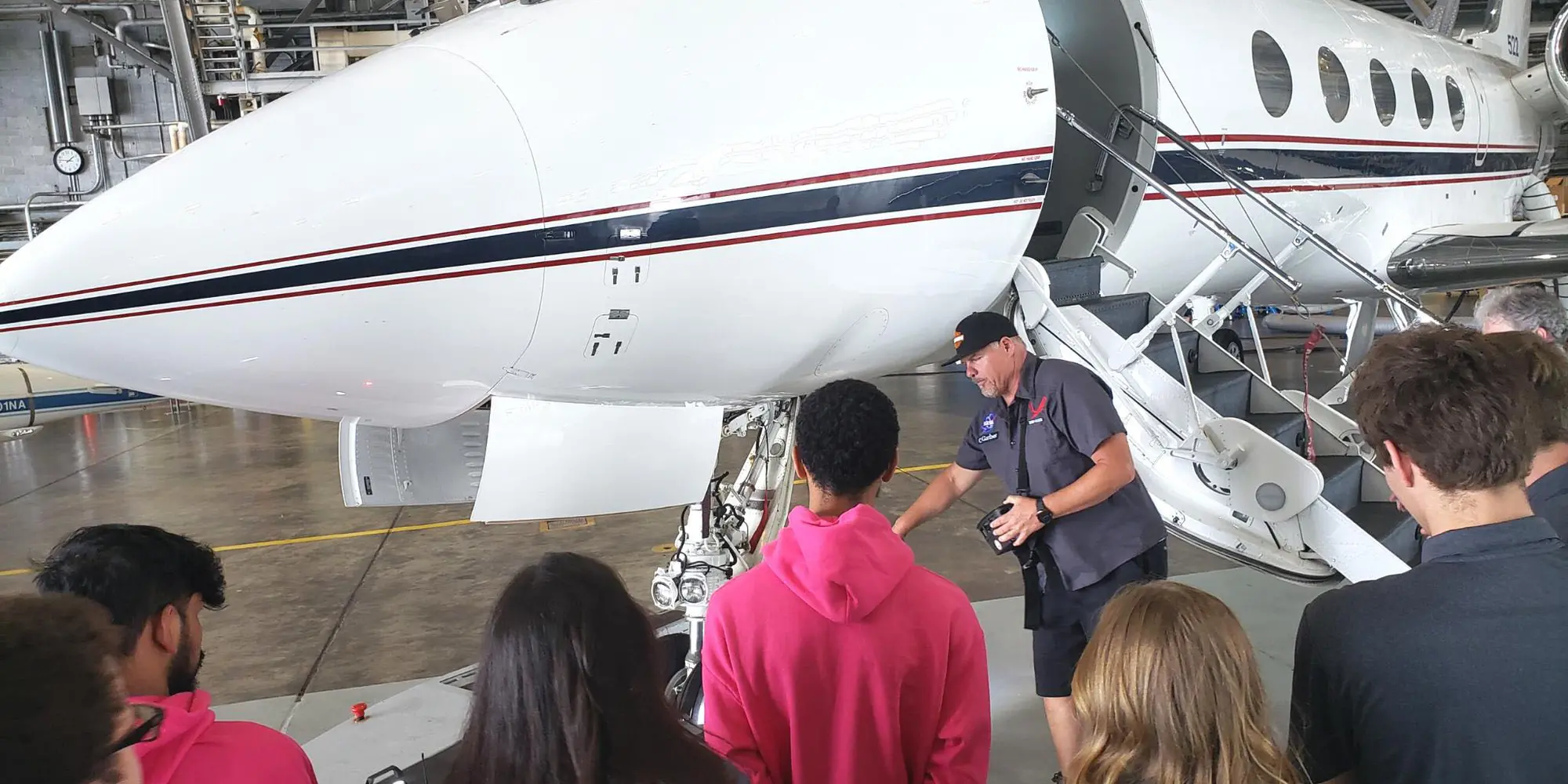
CMU Team Designs the Airports of Tomorrow
Media Inquiries
A team from Carnegie Mellon University won NASA’s Gateways to Blue Skies: Airports of Tomorrow competition(opens in new window) with their project, "Sustainability and Connected Autonomy: A New Era for Aviation." The new competition asks teams from universities around the United States to "develop external airport infrastructure design concepts to support the emerging aviation technology and markets that will comprise the climate-friendly aviation industry of tomorrow."
The CMU team was advised by Sebastian Scherer(opens in new window), an associate research professor in the Robotics Institute(opens in new window), and included Aaron Burns, an engineering and public policy(opens in new window) Ph.D. student; Tahaseen Shaik, an electrical and computer engineering(opens in new window) and robotics undergraduate; Ashima Sharma, a civil and environmental engineering(opens in new window) undergraduate with minors in human-computer interaction(opens in new window) and technology and policy(opens in new window); and Shruti Prasanth, a communication design(opens in new window) undergraduate with a minor in human-computer interaction.
The challenge of this year's Blue Skies competition was to design an airport to support the future of sustainable, eco-friendly aircraft in the year 2050.
A speculative timeline of when different technologies featured in the team’s presentation will be commercially available.
"Our response to that design problem was to look at existing airports and technologies. We found the most effective techniques and designs that we could improve by the year 2050 and integrated that into our design," Shaik said.
Because their areas of expertise were so diverse, the team’s solution improved almost all aspects of airport infrastructure.
"One of the things the judges said they appreciated about our design was how holistic it was," Sharma said. "I think the fact that we had such a wide variety of backgrounds really helped. I feel like projects like these are really helpful because in the workforce you will be working with all of these people. Especially working with people outside of engineering, like design students, gives you a totally different perspective."
"Going into this project, and especially handling the technical content was a challenge for me, and put me out of my comfort zone as the graphic designer for my team. I think it was one of the greatest experiences I've had because it showed me the power of a multidisciplinary team, and that my role is equally valued and necessary to succeed," Prasanth added.
The group’s proposal included modern fuel options ranging from batteries to sustainable aviation fuel (SAF) — similar to the jet fuel we use now but made from sustainable sources and products that would otherwise be wasted, such as agricultural waste and cooking oil. They predict that by 2050, the largest proportion of our fuel used in planes will be SAF. They proposed many new designs for airplanes, the two most likely being blended wing body and strut-based wing design, both of which are more fuel-efficient than the current airplane design. Sharma said that United Airlines has already bought supersonic aircraft to add to their fleet and plans to use them commercially by 2029. Supersonic jets are notoriously far less environmentally friendly; however, Boeing proposes they will be able to add these jets to their fleet and have them run entirely on SAF.
The team proposed battery power for most of the domestic activities in the airport, such as baggage transportation and airplane preflight inspection drones. The plans included autonomous human-sized drones powered by batteries ferrying people from the city to the airport while autonomous robots take care of the preflight checks on the planes and clean the terminal and tarmac. A large, centralized energy hub charges the batteries of these robots and allows them to simply swap out batteries when they need to instead of waiting for them to charge. The major drawback to batteries is that they are heavier and generate less energy than many other power sources, so they are not ideal for use in airplanes themselves.
The group provided an expected timeline — a rough estimation, based on industry sources and research publications — for these technologies to be commercially viable. Some innovations are already being tested or are in mass production, while others rely on technology that is not yet available.
The team was awarded the opportunity to intern with NASA during the 2022-23 academic year. They were also given the chance to present their climate-friendly airport integration concept at the Airports Council International - North America Annual Conference and were encouraged to publish their paper presenting their ideas. This is a perfect opportunity for team members whose career aspirations lean toward the aeronautics industry.
"I’ve been really interested in aviation and robotics since high school, so I was really excited that I was able to incorporate that into this project," Shaik said.
A CMU team lead by Faculty Affiliate Sebastian Scherer took first place in the inaugural NASA Gateways to Blue Skies competition for their project titled: "Sustainabiltiy and Connected Autonomy: A New Era for Aviation." Read more: https://t.co/XfLfyDPKtN
— CMU Scott Institute for Energy Innovation (@CMUenergy) June 7, 2022
